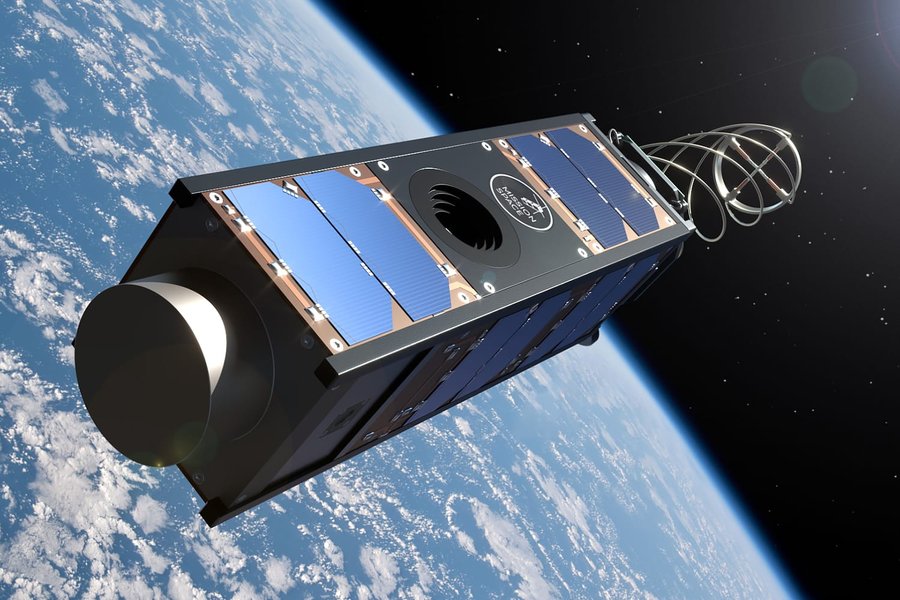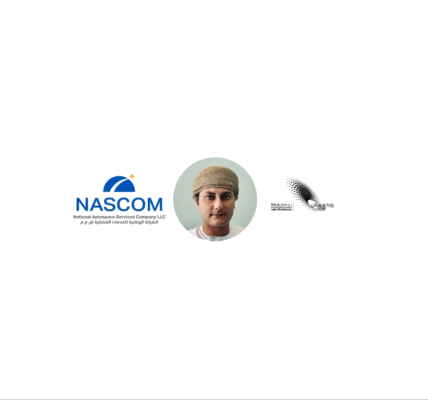Mission Space: Pioneering Space Weather Intelligence and Transforming the Future of Space Exploration

Welcome to our exclusive interview with Alex Pospekhov, the CEO of Mission Space, a groundbreaking space tech company revolutionizing the field of space weather intelligence. With a mission to provide private satellite-based nowcast and forecast systems, Mission Space is dedicated to mitigating the effects of geomagnetic storms and coronal mass ejections, ensuring the safety and success of space industry operations. In this interview, we delve into Alex’s journey, the unique aspects of Mission Space’s technology, their potential clients, and the critical role of space weather intelligence in shaping the future of space exploration. Join us as we gain valuable insights from Alex Pospekhov, a visionary leader driving innovation in the space industry.
Can you provide an overview of Mission Space and its role in the space industry? What sets your company apart from other players in the market?
Mission Space is a space tech company specializing in developing the first private satellite-based space weather nowcast and forecast system. Space weather is essential for the space industry and commercial space exploration. Our goal is to help space companies to solve the problem of data deficit and lack of warning tools to mitigate the effects of geomagnetic storms and coronal mass ejections.
Our expertise in this area ensures that creating a radiation shield for the planet is not only feasible but also highly achievable, making us a prominent player in this field.
What inspired you to start a company, and how did you get into this field?
I don’t have a tech background or education, but interestingly, I’ve found that this is not uncommon among company founders in the space industry. When I first learned about the space industry, I downloaded a report from the European Investment Bank that emphasized the importance of attracting non-technical individuals to the field. The report highlighted the potential for a revolution in the space sector similar to what happened with the Internet 30 years ago. Reading that report made me realize there is a strong demand for people like me in this industry. Additionally, working in space allows me to pursue honest and noble goals that take me back to my childhood fascination with outer space.
Mission Space specializes in space traffic management and space weather intelligence. How do you define space weather?
Space weather is a complex phenomenon that results from solar flares and intergalactic cosmic rays. The European Space Agency defines space weather as the environmental conditions in Earth’s magnetosphere, ionosphere, and thermosphere due to the Sun activity and the solar wind. These conditions can influence the functioning and reliability of space-borne and ground-based systems and services or endanger property or human health.
Solar activity impacts assets in space, the Moon, and Earth. Failing to monitor and manage this risk not only jeopardizes industrial space exploration but also threatens the quality of life on Earth that we have grown accustomed to.
What distinguishes Mission Space from your competitors, and what makes your technology unique?
At Mission Space, our team boasts a cumulative technical experience exceeding 100 years. Our scientists have written over 100 articles and journals on space weather technologies, and some team members have previously worked for NASA. Our considerable technological expertise allows us to create high-precision detectors with low-power energy consumption, giving us a distinct advantage in the industry.
Who are your potential clients?

Our potential clients include preliminary satellite operators for whom space weather monitoring is crucial, space agencies that purchase and utilize this data about space weather, as well as universities and scientific organizations worldwide that are interested in the space industry.
Our services can also benefit other industries, such as aviation, space tourism & exploration, energy, railway systems, and high-speed financial trading. For instance, in aviation, advance notice of space weather events is critical for rerouting high-latitude flights during intense radiation levels and alerting aircraft in flight of potential loss of communication.
In space tourism & exploration, constant space environment monitoring and accurate long and short-term forecasts of space weather are crucial for ensuring the highest level of mission safety about solar storms and radiation impacts on people and on-board systems.
Energy companies can use space weather services to help minimize the impact of geomagnetic storms, lower the risk of blackouts, and improve the design and modeling of future, more resilient systems. Furthermore, rail network operators can benefit from space weather forecasts to help understand when rail systems may be at risk and reduce potential economic losses.
Lastly, high-speed financial trading can be affected by showers of high-energy particles and radiation from solar flares, disrupting the synchronized timing of transactions and hindering the processing of the extremely high volume of shares, money, or stock exchanges which is confirmed by interest from the hedge fund operators.
How does Mission Space collect and analyze space weather data? What technologies and methodologies do you employ to monitor and forecast space weather events accurately?
At Mission Space, we have a multi-step process to monitor and forecast space weather events accurately. The first component is our satellite detectors, which we produce and launch into space to collect necessary data. Our detectors in LEO collect critical space weather data in real time, which we then transform into predictive analytics, value-added insights, and alert notifications. We transmit the payload data from satellites to ground stations on Earth for further analysis. Next, we analyze and incorporate data from public sources, utilizing models created by our scientists. Then, we integrate data from third-party open sources with our data and upload it all to the cloud. Lastly, we apply customized algorithms to intelligent datasets to generate predictive analytics, forecasts, alerts, and insights that users can access through API integrations or our cloud platform.
Space weather events can lead to disruptions in GPS navigation and positioning systems. How does Mission Space assist different countries in mitigating the potential risks to navigation and geolocation services caused by space weather?
At Mission Space, we are dedicated to reducing the potential risks to navigation and geolocation services caused by space weather events. The sun is subject to complex processes that can lead to intense energy releases. The energy and particles emitted can travel through interplanetary space and impact Earth’s environment, potentially disrupting GPS navigation and positioning systems. Global Navigation Satellite Systems (GNSS) rely on Radiofrequency waves and are susceptible to perturbations and outages during solar events. In some cases, these perturbations can negatively affect satellite-based navigation performance.
To address this challenge, we aim to launch a constellation of 24 satellites to provide real-time monitoring and forecasting of space weather. With this, we can forecast space weather perturbations up to specific hours in advance, allowing various strategies to be put in place to prepare for potential impacts. This includes activating spacecraft, changing orbits, and making informed decisions on Earth.
As the Gulf countries continue to invest in space-related ventures and infrastructure, how do you see the role of space weather intelligence evolving in supporting the growth and resilience of these endeavors?
There is a center for space weather in Saudi Arabia, and the United Arab Emirates is also investing in space weather intelligence. The space weather industry will continue to grow and prosper as Gulf countries aim to establish a thriving space industry. We absolutely sure Gulf countries will play major roles in space exploration in the upcoming years.
Mission Space emphasizes the importance of sustainability and responsible space practices. Could you elaborate on how your company integrates environmental considerations into its space missions and projects?
To illustrate this point, I would like to give you a vivid example. Last year, Starlink launched 49 satellites, but 40 of them crashed due to unfavorable space weather conditions and the inability to predict them. This not only resulted in wasted efforts but also triggered a new production cycle, where 40 more satellites needed to be made, further harming the environment. These negative impacts could have been avoided without more data on space weather. This is just one example of the many challenges any of our target industries face. Mission Space is focused on addressing these issues by monitoring and predicting space weather to minimize its impact on our operations and the environment. By doing so, we strive to achieve a more sustainable approach to space exploration.
As the space industry becomes more competitive, what strategies does Mission Space employ to stay ahead and remain at the forefront of technological advancements in space exploration and technology?
Our strategies may appear simple, but they are pretty complex. First and foremost, Mission Space has a dedicated research and development department. Our team of scientists and engineers participate in numerous scientific missions and programs that allow us to stay on the cutting edge of science and apply its principles to our business. In short, Mission Space is at the forefront of scientific thought regarding strategies and technological advancements in the space industry.
What are the last milestones of the company? Which countries and regions are you expanding now?
Currently, our focus is on expanding to the MENA region, and we are working hard to make this transition as smooth as possible. In addition, we are targeting South Korea and Japan as they have a strong track record in advanced space technologies and a wealth of expertise in the field of space weather.
Have you raised any funds so far? What are your plans for the future investment rounds?
We have received 650,000 euros from angel investors who support our company. In the future, we plan to apply for grants from European Union Funds and then move on to the Series A funding round to launch the entire satellite constellation.
Here are some noteworthy achievements of Mission Space:
- We have raised €150 thousand from Fit 4 Start, one of Luxembourg’s leading startup accelerator programs, and €500 thousand from private investors.
- In 2022, we won the CYEL contest with Mission Space.
- In 2023, Mission Space was included in the 110 Deep Tech Startups ranking by Europe’s leading tech media outlet, Sifted.
What would you advise those peers dreaming of SpaceTech and now developing their startups?
My advice would be to take action. Although the space industry is complex, taking action is the best way to achieve your dreams.
It’s essential to have the will and determination to succeed. Remember the phrase, “where there’s a will, there’s a way.” This means that if you’re determined to do something, you’ll find a way to accomplish it, even if it’s challenging. So take action and work towards your goals with determination.



